Posts in this project
AquaFlow - Blog #1 - Introduction
AquaFlow - Blog #2 - The coarse filter
AquaFlow - Blog #3 - The sedimentation tank
AquaFlow - Blog #4 - The reed bed
AquaFlow - Blog #5 - The storage tank
AquaFlow - Blog #6 - Conclusions
The reed bed
The next stage of the greywater treatment system is a reed bed, an area where phytodepuration occurs.
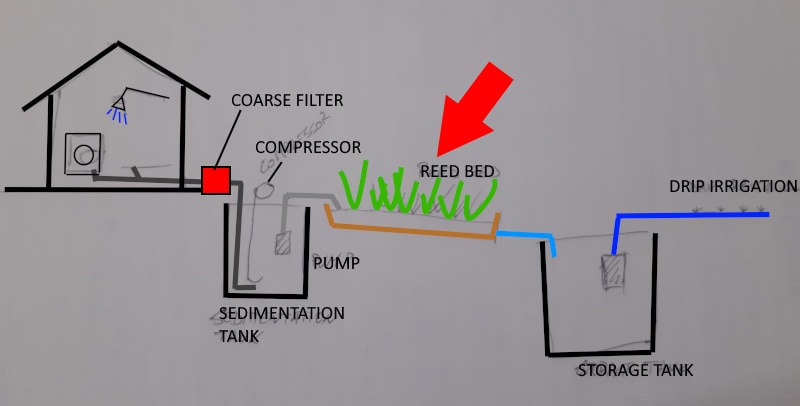
Phytoremediation is a treatment system with low environmental impact, mainly based on biological processes characteristic of aquatic environments and wetlands. Constructed wetlands consist of wetlands artificially reproduced in waterproofed basins, crossed by wastewater, made with technological materials, but with the appearance of ponds and reedbeds of good environmental integration thanks to the inclusion of plant species typical of wetlands ( hygrophilous macrophytes). The plants and, above all, the microbial communities that develop within the system are responsible for the purification process.
There are many different types of phytoremediation plants. Depending on the hydraulic path of the wastewater, constructed wetlands are divided into:
- SFS-h or HF (Subsurface Flow System - horizontal or Horizontal Flow), horizontal subsurface flow systems: these are basins filled with inert material, where the waste flows horizontally in conditions of continuous saturation ("plug-flow" reactors) using emerging rooted macrophytes;
- SFS-v or VF (Subsurface Flow System - vertical or Vertical Flow), vertical subsurface flow systems: they are trays filled with inert material, where the wastewater flows vertically in alternating saturation conditions ("batch" reactors) using rooted macrophytes emerging;
- FW or FWS (Free Water or Free Water Surface), free flow (or superficial) systems: they reproduce a natural marshy area, where the water is in direct contact with the atmosphere and generally shallow with the insertion of hydrophytes and of helophytes.
Plants have the role of creating a suitable habitat for the growth of bacterial flora which is the real protagonist of biological purification. They contribute to the recovery of polluted water thanks to the reduction of the volume of wastewater implemented with root absorption and leaf transpiration, the absorption of nutritives (nitrogen, phosphorus and other microelements) and toxic elements. The submerged part of aquatic plants performs the dual function of filter and support for the microbial population, the micro-ecosystems capable of eliminating pathogenic microorganisms.
The simultaneous presence of aerobic, anaerobic and anoxic conditions is essential for the development of different types of microorganisms which allow the oxidation of the organic substance, ammonification, nitrification, denitrification of nitrogen.
I chose the first type of treatment system (Subsurface Flow System - horizontal or Horizontal Flow)
First I placed a polyethylene sheet as an extra protection against greywater filtration. Next, I created a basin with some railway sleepers (a leftover from a gardener, who used the sleepers to border flower beds).
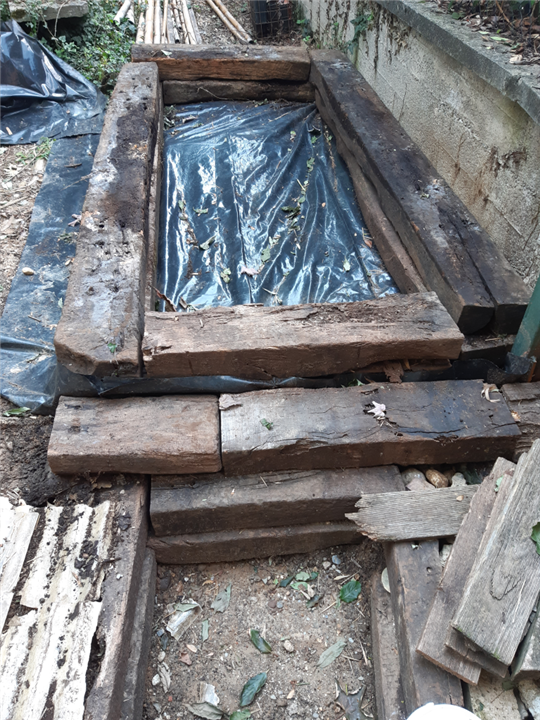
I placed another polyethylene sheet to contain greywater. I added some baffles to slow down water flow and create a constrained path
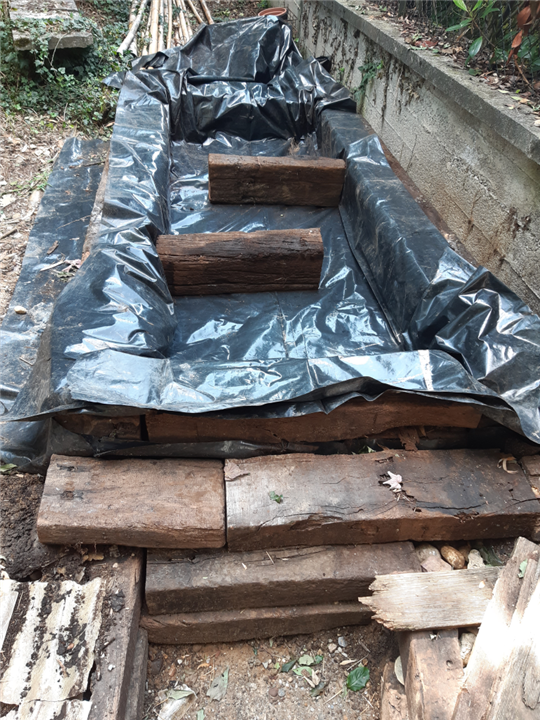
Then, I filled all with volcanic stones, placed a non-woven fabric and covered everything with soil.
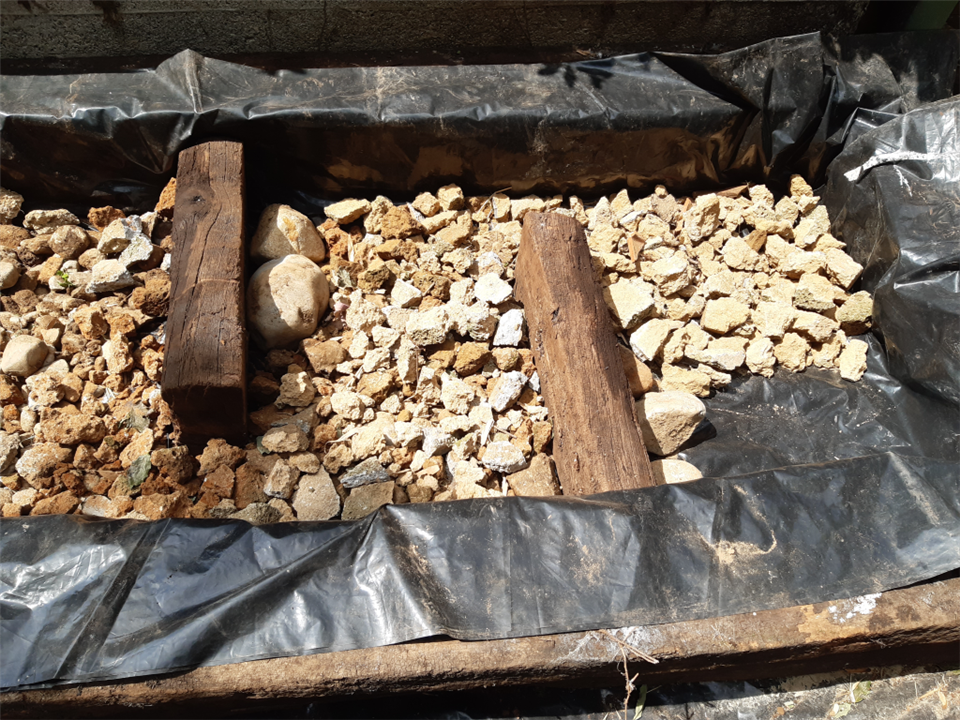
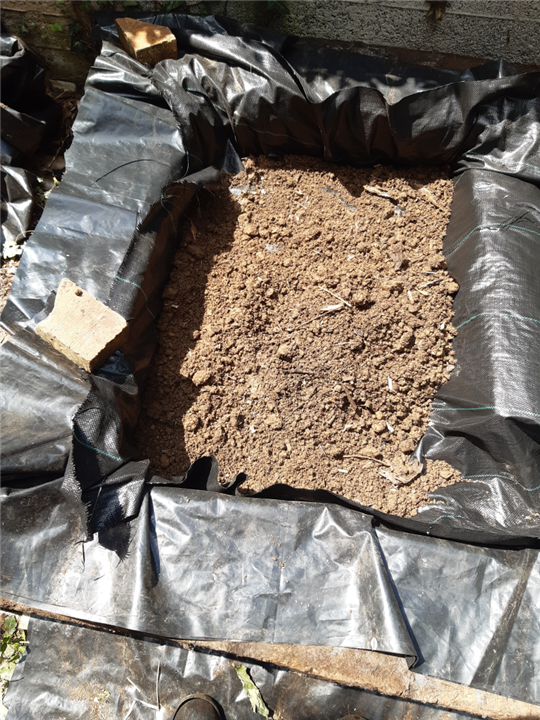
On the side where the outlet hose is placed, I placed a filter made of a plastic container where I drilled an hole for the outlet hose. The filter is below the second polyethylene sheet (I just made some cuts to let water drip into the plastic container). In this way, no water is going to exit the basin.

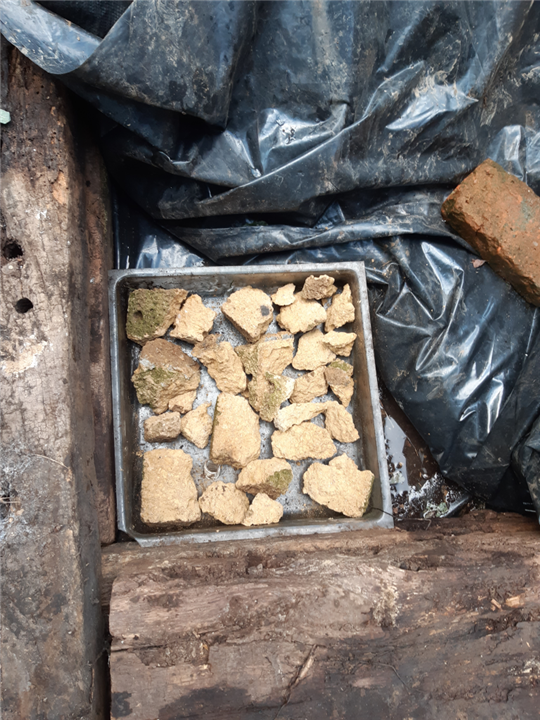

The outlet hose is connected to the storage tank
This is the final result
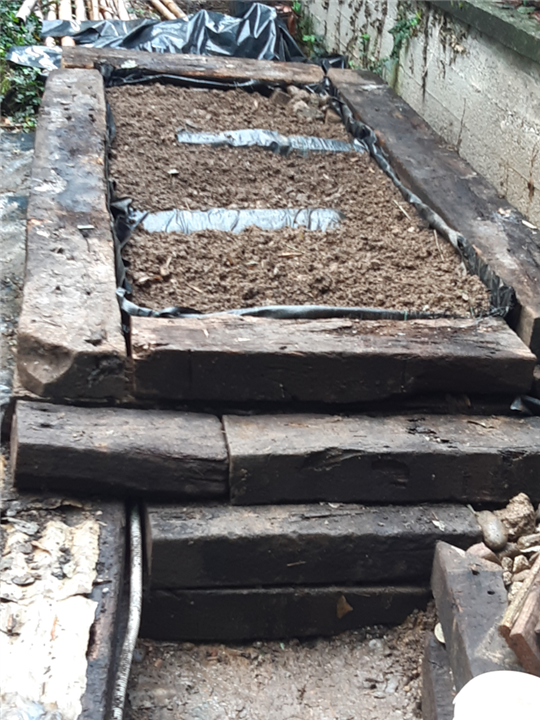
References
http://www.iridra.eu/en/fitodepurazione-en/fitodepurazione-classica-en/fitodepurazione-hf-en.html
